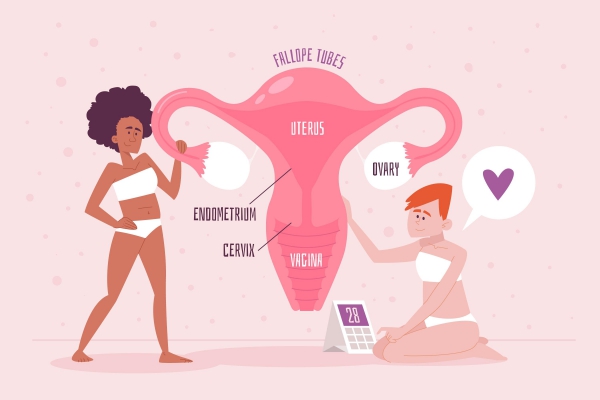What is cervical incompetence?
The cervix is a part of the female reproductive system that is found at the lower portion of the uterus. Its function is to act as a gateway between the vagina and the uterus. The cervix carries out various functions. It is responsible to produce mucus which changes consistency along the course of your menstrual cycle. It produces clear mucus at your most fertile point to promote pregnancy after sexual intercourse. Once pregnancy occurs, the cervix produces a thick mucus plug to prevent infections from reaching the embryo. It widens during labour to allow the passage of the baby from the uterus into the vagina. It also opens slightly during menstrual cycle to allow passage of blood.
Cervical incompetence, also known as cervical insufficiency, is when the cervix is not able to retain a pregnancy during the second trimester despite the absence of contractions or labour. It is a common cause of pregnancy loss which can happen recurrently. This is usually due to a weakening in the tissues of the cervix. Once you had a pregnancy loss due to cervical incompetence, you are at increased risk of experiencing it again.
What are the causes and risk factors for cervical incompetence?
The cervix is made up of muscles and connective tissues which are responsible for its ability to widen and contract. Cervical incompetence is thought to arise when these tissues weaken. This weakening may occur due to several factors:

- Infections in the uterus
- Bleeding from the uterus
- Overdistension of the uterus
- Abnormalities in the cervix from birth
- Laceration of the cervix during previous labour and delivery
- Gynaecological procedures that require widening of the cervix
However, in many cases, the exact cause remains unknown.
What are the symptoms of cervical incompetence?
Usually, cervical incompetence is associated with a history of recurrent second-trimester pregnancy loss or deliveries that presented with no or minimal symptoms. Some symptoms that may be associated with cervical insufficiency during pregnancy includes:
- Pressure sensation in the pelvis
- Braxton-Hicks like contractions which are sporadic contractions and relaxation of the muscles in the uterus. These are often referred to as “false labour” pains.
- Premenstrual-like cramping
- Pain in the back
- Changes in the vaginal discharge. These may include increased volume, change in colour (from clear, white or pale yellow to pink or red spotting) or change in consistency where it may become thinner

How is the diagnosis of cervical incompetence made?
The diagnosis of cervical insufficiency is usually made during pregnancy. To make the diagnosis of cervical incompetence, your doctor will start by asking you a series of questions. It is important to tell your doctor whether you have had pregnancy losses in the past as well as any gynaecological procedures done. He/she will then proceed with a physical examination. This will involve a pelvic examination. In this procedure, your doctor will examine your cervix to see if there is any fetal membranes (amniotic sac) that is protruding from your cervix. If this is present, this means that you have cervical incompetence. A transvaginal ultrasound can also be useful in making the diagnosis. This involves the use of a probe that emits sound waves to visualise the cervix and surrounding structures. The probe is inserted into the vagina and protruding membranes are looked for.

It is impossible to make or exclude the diagnosis of cervical insufficiency prior to pregnancy.
How is cervical incompetence managed?
There are several ways by which cervical insufficiency can be managed. These include:
- Cervical cerclage: In this procedure, a stitch is placed on the cervix to improve the tensile strength of the cervix. It can be done through the vagina itself or through an incision in the abdomen. Its role is to reinforce the cervix in order to maintain pregnancy until the time of delivery. The stitch has to be removed few weeks before delivery to prevent rupture of the cervix during delivery.
- Progesterone supplementation: If you had a previous spontaneous preterm birth in the past, the American College of Obstetricians and Gynaecologists recommends that you take progesterone supplementations to decrease the risk of it happening again. It can also be helpful in women with a short cervix.
- Cervical pessary: This is a special device that is inserted in the vagina to hold the uterus in place. It helps in relieving the pressure on the cervix due to the pregnant uterus. However, more studies are required to determine if cervical pessary is an effective treatment modality for cervical incompetency.
If you have cervical insufficiency, your doctor may advise you to restrict from sexual activity and limit certain physical activities. However, this has not yet been well studied.

Prognosis
Cervical cerclage is effective in the majority (90%) of women. Those who are diagnosed with cervical insufficiency are likely to have the same problem in subsequent pregnancies.

Source:
Berghella, V., 2020. Cervical insufficiency
Norwitz, E., Cervical Insufficiency
Practice bulletin no. 142: cerclage for the management of cervical insufficiency. Obstet Gynecol. 2014 Feb. 123(2 Pt 1):372-9.
Berghella V, Ludmir J, Simonazzi G, Owen J. Transvaginal cervical cerclage: evidence for perioperative management strategies. Am J Obstet Gynecol. 2013 Sep. 209(3):181-92.



